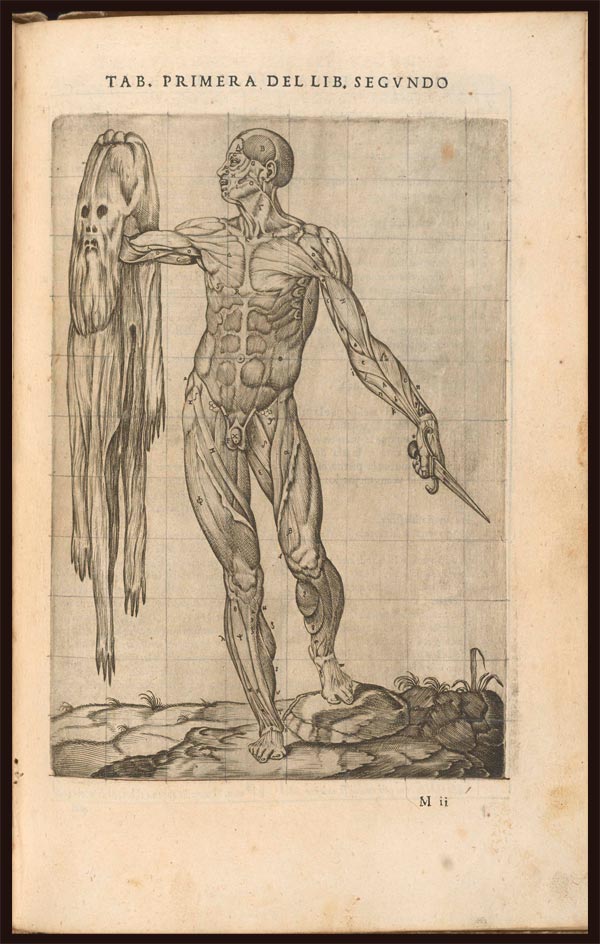Though Valverde studied medicine under Vesalius’ rivals, Bartolomeo Eustachi and Realdo Columbo, he did not offer new challenging ideas in this anatomical treatise. In fact, Valverde’s book was heavily based on Vesalius’ Fabrica, and most of its forty-three copperplate engravings were copied directly from the Fabrica. Perhaps one of the most memorable engravings in the book is an écorché holding up his own flayed skin in his right hand and a knife in the other. Scholars have suggested that it was modeled after Michelangelo’s painting of St. Bartholomew in the Last Judgment in the Sistine Chapel.


